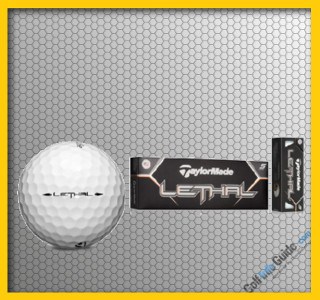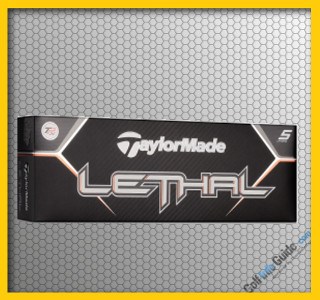
© Taylormade Golf
Ball tested: TaylorMade Lethal
Category: Tour/Advanced/Performance
Specs: Construction – Five-piece; Cover – Material; Core – Polybutadiene; Dimples / Pattern – 322 in seamless LDP (Low-Drag Performance) pattern
Compression: High
Price as tested (new): $45.99 per dozen
Ball notes: TaylorMade’s tour-grade ball got a big profile boost when Justin Rose used it to win the 2013 U.S. Open at Merion. Lethal had already earned solid reviews since debuting earlier in the year, winning a gold medal in Golf Digest’s annual Hot List testing.
Lethal replaced the Penta TP5 in TaylorMade’s revamped ball lineup. The one major difference between the two is the Lethal’s greater dimple coverage, about 86% of the ball’s surface vs. the Penta TP5’s 80%. The goal, according to the company, was to create a ball that better complements modern equipment.
“Today’s clubs are designed to launch the ball higher,” noted Dean Snell, TM’s Vice President of golf ball R&D, “so our team worked to ensure that these higher launch conditions do not cause the shot to balloon or become more affected by the wind. We designed Lethal to further maximize distance, extend the second stage of flight and control spin and aerodynamics when playing into the wind.”

© Taylormade Golf
Sound and feel: Lethal is definitely on the firm side for a tour model, though the feel isn’t harsh or overly heavy. It may take some getting used to for players accustomed to the softer feel of the Titleist ProV1, for example, or Callaway HEX Black Tour.
Off the tee: We had heard that Lethal launched with a relatively low trajectory, and our experience backed it up. In fact, it could well be the antidote for golfers who lose distance by hitting high, “spinny” drives. If carry yardage suffers – and it didn’t appear to – Lethal’s roll-out makes up for it and then some. Overall, it’s a very long ball that doesn’t waver in flight.
From the fairway / rough: More of the same here in the trajectory department, but with ample spin to stop any well-struck shot. In fact, the combination of low flight and high spin could cause issues for some players; Lethal will definitely back up with the wedges. But we really liked this ball’s controlled trajectory, especially when hitting into a light breeze.
Around the green: Lethal’s firm feel doesn’t translate to a lack of short game performance. In fact, its excellent spin caught us a little off guard. This is a very responsive ball that compares favorably to the ProV1 and Bridgestone B330-RXS. Putts nicely too.
Bottom line: Lethal has been widely hailed as TaylorMade’s best ball yet. We agree. While the firmness may not catch everyone’s sweet spot, this model performs as well as any tour ball we’ve tried. Low-handicap golfers should give it a shot.
Golf Ball Videos:
– Compression Video
– Spin Video
– Dimples Video
– Golf Ball Brands Video
– Titleist Video
– Understanding Spin Video
Categories Explained:
Value/Recreational/Distance – Designed for mid- to high-handicap golfers with swing speeds below 90 mph; typically feature two-piece construction and firm covers; promote greater distance over high spin rates. Examples: Pinnacle Gold, Slazenger RAW Distance
Premium – Designed for low- to mid-handicap golfers with swing speeds of 90-99 mph; typically feature multi-layer construction and medium-soft covers; happy medium between Value/Recreational and Tour categories for distance and spin qualities. Examples: Titleist NXT Tour, Callaway HEX Diablo
Tour/Advanced/Performance – Designed for low-handicap and professional golfers with swing speeds in excess of 100 mph; typically feature multi-layer construction and soft covers; promote greater spin rates and enhanced feel over distance. Examples: Titleist ProV1, Bridgestone Tour B330





